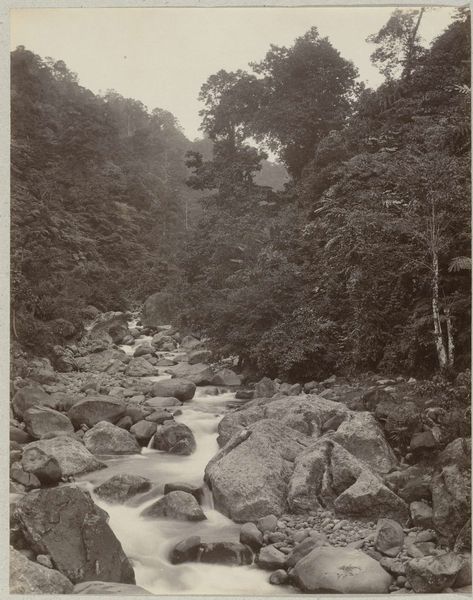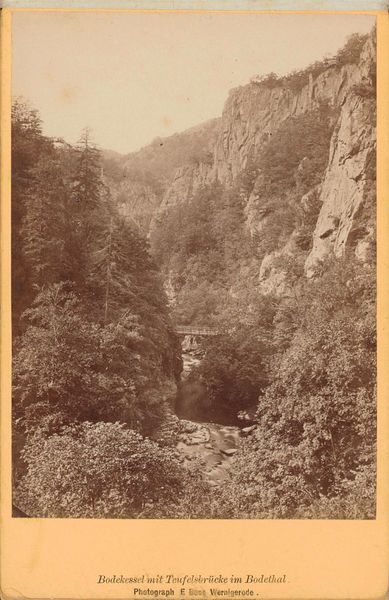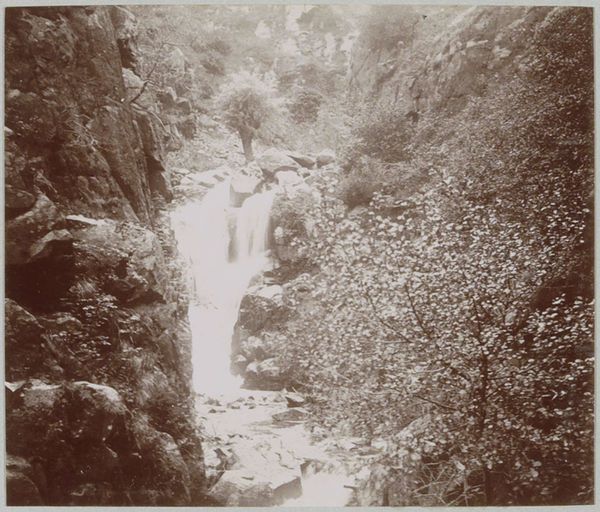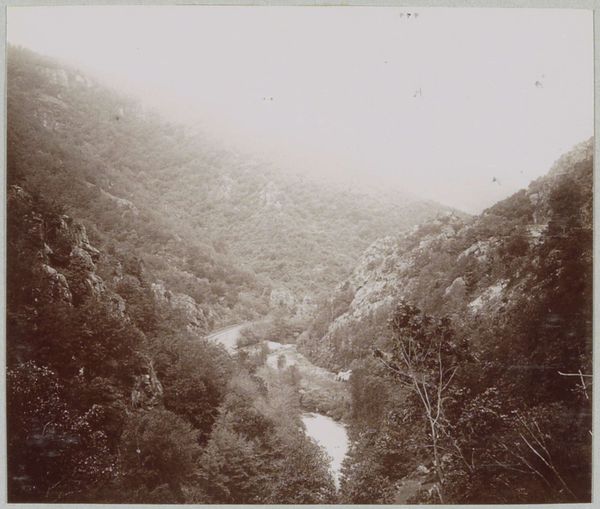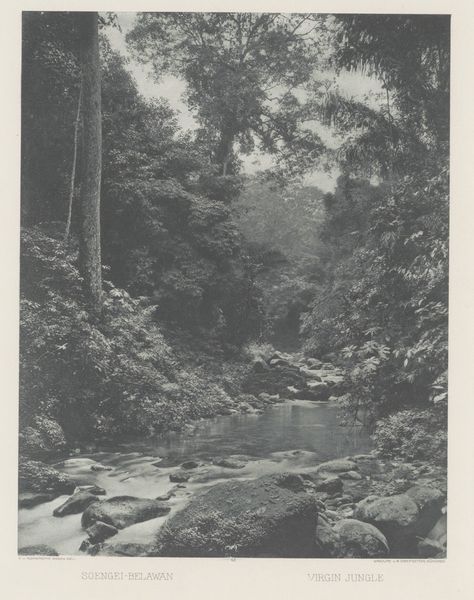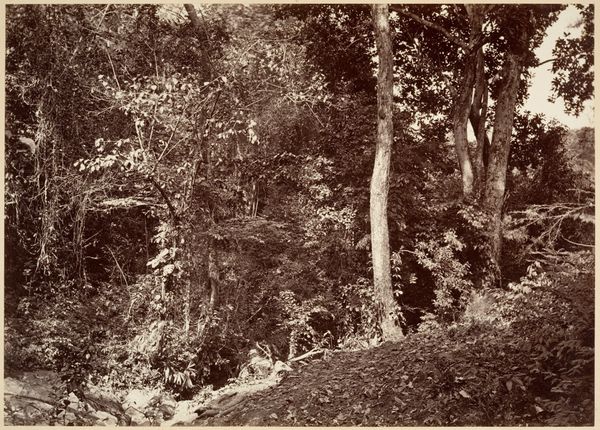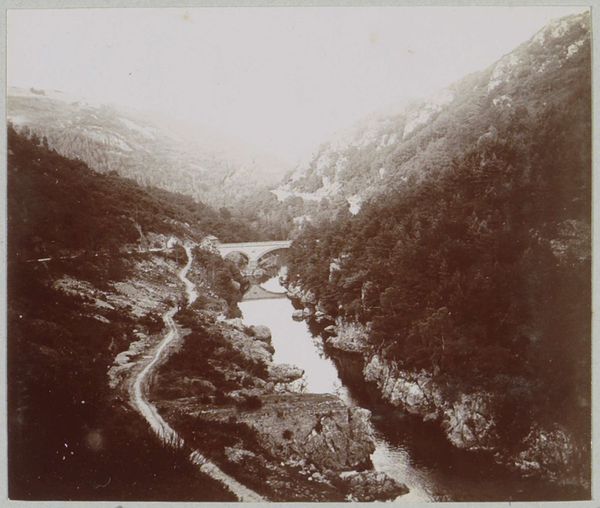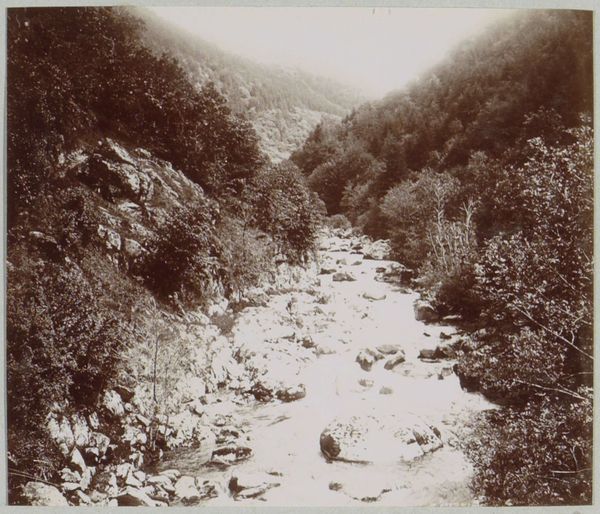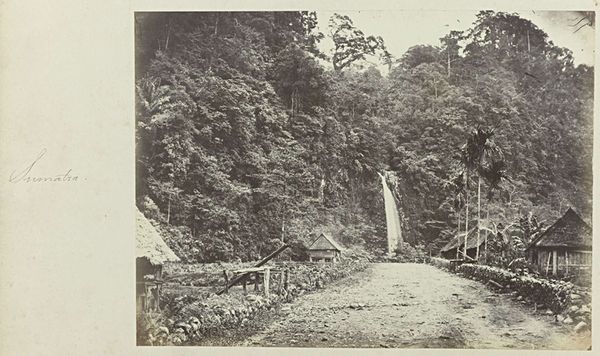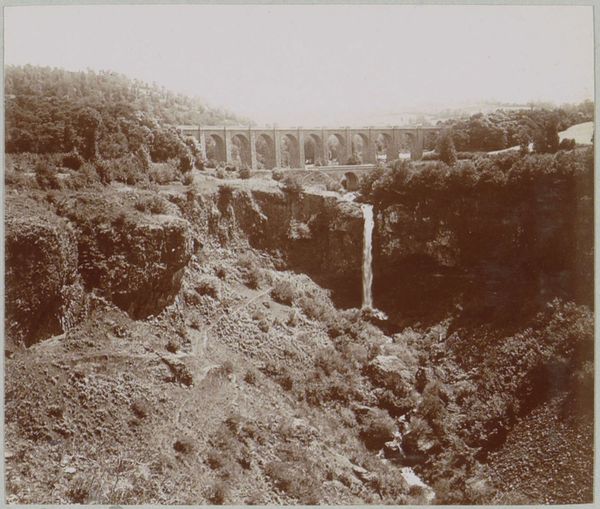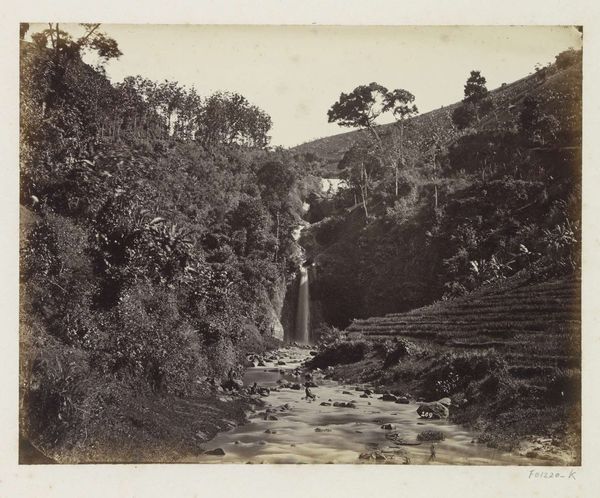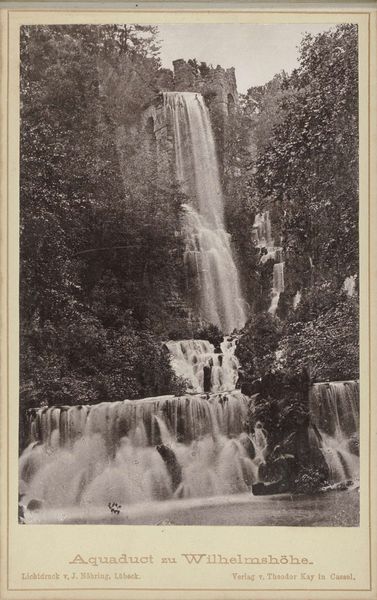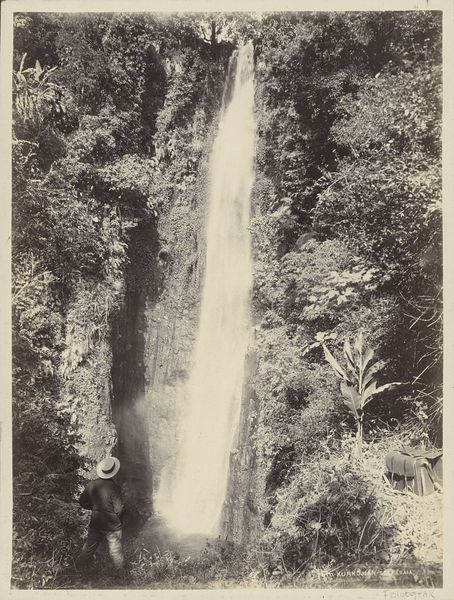
photography, gelatin-silver-print
#
landscape
#
river
#
nature
#
photography
#
gelatin-silver-print
#
monochrome photography
#
naturalism
#
monochrome
Dimensions: height 268 mm, width 198 mm
Copyright: Rijks Museum: Open Domain
Curator: Look at this image— "River through the Anai Gorge on Sumatra"—a gelatin silver print, most likely created between 1891 and 1912 by Christiaan Benjamin Nieuwenhuis. It’s currently housed here at the Rijksmuseum. Editor: My first thought is "claustrophobia." Not in a negative way, though! It feels intensely lush, overwhelming even. The black and white amplifies that sensation, like you're peering into a forgotten world, hushed and teeming with life. Curator: Absolutely. Nieuwenhuis, as a photographer, was deeply interested in documenting the natural landscapes of the Dutch East Indies, now Indonesia. The composition emphasizes the dramatic topography, showcasing both the wild river and the dense vegetation hugging the steep slopes of the gorge. It very much fits into a naturalistic aesthetic, a very modern concern for recording and representing the environment. Editor: I’m immediately drawn to the river. That blurry effect, capturing the movement… it's gorgeous. But there’s also this incredible stillness suggested by the foliage around it, almost like the trees are holding their breath. There’s such a contrasting sensation present. How might that dynamism factor into our interpretation? Curator: Considering the context of colonial-era photography, this work certainly contributes to a particular vision of the East Indies. It might seem romantic, even sublime, in its representation of nature, yet, at the same time, it implicitly highlights the land’s potential for resource extraction and development. The documentary aspect, that “objective” recording of reality, served the interests of colonial administration and exploitation. Editor: That’s a chillingly vital point! There's that tension again—beauty interwoven with purpose. One is left to consider the nature of intention in shaping our perception, even of seemingly simple landscapes. Did Nieuwenhuis consider those politics of imagery when he captured this view? Was this about raw nature, or something more... calculated? Curator: A fascinating question. The photo undoubtedly serves both artistic and documentary purposes, mirroring the complex interplay of observation and exploitation that defined that period. Nieuwenhuis presents an encounter with nature and inscribes the territory into the colonial apparatus. Editor: Thinking about the image’s function in that colonial framework makes me reconsider what “nature” means here. The very act of documenting is an intervention. I guess ultimately, every artistic or documentarian act changes what's truly there, so every record, even photographs of natural elements like this, are interpretations. Curator: Indeed. It shows us the layered readings we can pull from a work. Something that at first glance seems a fairly straightforward, beautiful depiction, ends up engaging in some truly difficult ideas. Editor: And by acknowledging them, maybe we see that rushing river anew—not just water, but time, change, and, importantly, all of the human ambition swirling through it.
Comments
No comments
Be the first to comment and join the conversation on the ultimate creative platform.
